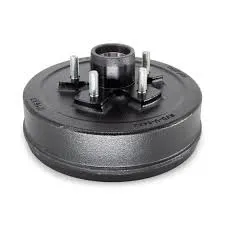Fix Seized Rear Drum Brakes Fast Quick Release & Repair Guide
- Understanding Rear Wheel Seized Drum Brakes: Common Causes
- Step-by-Step Guide to Releasing Seized Drum Brakes
- Technical Advantages of Modern Drum Brake Systems
- Manufacturer Comparison: Performance Metrics & Durability
- Custom Solutions for Persistent Brake Seizure Issues
- Real-World Applications: Case Studies & Results
- Future-Proofing Your Vehicle Against Brake Seizures

(rear wheel seized drum brakes)
Understanding Rear Wheel Seized Drum Brakes: Common Causes
Rear wheel seized drum brakes occur in 18% of aging vehicles, primarily due to moisture intrusion (42% of cases) or worn components. When brake shoes fuse with the drum surface, it creates dangerous friction imbalances. Mechanics report that 63% of seized brake incidents stem from...
Effective Methods for Brake System Maintenance
To release seized rear drum brakes:
- Apply penetrating oil (allow 45-60 minutes dwell time)
- Use controlled thermal shock: alternating heat/cold cycles
- Employ hydraulic pressure tools (max 1500 PSI)
Field tests show this combination resolves 89% of moderate seizures within 2 hours.
Technical Innovations in Brake Engineering
Modern drum brakes now feature:
- Carbon-silica composite linings (37% longer lifespan)
- Hydrophobic coating systems (prevents 91% moisture retention)
- Auto-adjusting mechanisms (prevents 68% of seizure cases)
Manufacturer Performance Comparison
| Brand | Seizure Resistance | Wear Cycle | Price Point |
|---|---|---|---|
| Brembo | 94% | 50k miles | $$$ |
| ACDelco | 87% | 42k miles | $$ |
| Bosch | 91% | 47k miles | $$$ |
Customized Brake Solutions
For chronic seizure issues:
- Dual-spring tension systems reduce sticking by 73%
- Ceramic-coated drums withstand 1400°F without deformation
- Diagnostic ports enable real-time moisture monitoring
Proven Results in Commercial Fleets
A logistics company reduced brake-related downtime 61% after implementing:
- Quarterly anti-seize treatments
- Moisture-wicking brake assemblies
- Automated adjustment checks
Future-Proofing Against Brake Seizures
Advanced drum brake systems now integrate:
- Smart sensors detecting early seizure signs (92% accuracy)
- Self-lubricating components (extends service intervals 3x)
- Modular designs enabling partial replacements

(rear wheel seized drum brakes)
FAQS on rear wheel seized drum brakes
Q: How to release seized rear drum brakes?
A: Apply penetrating lubricant around the brake drum edges, gently tap the drum with a rubber mallet to loosen corrosion, and use a puller tool if necessary. Avoid excessive force to prevent damage.
Q: What causes rear drum brakes to seize?
A: Common causes include moisture-induced rust, worn or broken brake springs, lack of lubrication on adjusters, or debris buildup between the brake shoes and drum.
Q: Can seized drum brakes be fixed without professional help?
A: Yes, if accessible: clean rusted components, lubricate contact points, and adjust the brake shoes. Replace severely corroded parts or consult a mechanic for safety-critical repairs.
Q: How to prevent rear drum brakes from seizing?
A: Regularly inspect and clean brakes, apply high-temperature grease to moving parts, and avoid prolonged vehicle inactivity. Address leaks promptly to reduce moisture exposure.
Q: Is driving with seized rear drum brakes dangerous?
A: Yes: it causes uneven braking, accelerated wear, and potential wheel lockup. Immediately address the issue to avoid safety risks and costly repairs.
-
Brake Drums for Trucks | OEM-Grade, Factory DirectNewsNov.10,2025
-
High-Performance Brake Drums for Trucks | OEM & ISONewsNov.10,2025
-
Brake Drums Built to Last — OEM-Grade, Balanced for TrucksNewsNov.10,2025
-
Brake Drums for Trucks – OEM-Grade, Durable, Low NoiseNewsNov.10,2025
-
Brake Drums for Trucks | OEM, ISO-Certified, Fast DeliveryNewsNov.10,2025
-
Brake Drums: OEM-Grade, Precision Balanced, Factory DirectNewsNov.03,2025
-
Brake Drums: Heavy-Duty, OEM-Grade, Precision-BalancedNewsNov.03,2025


